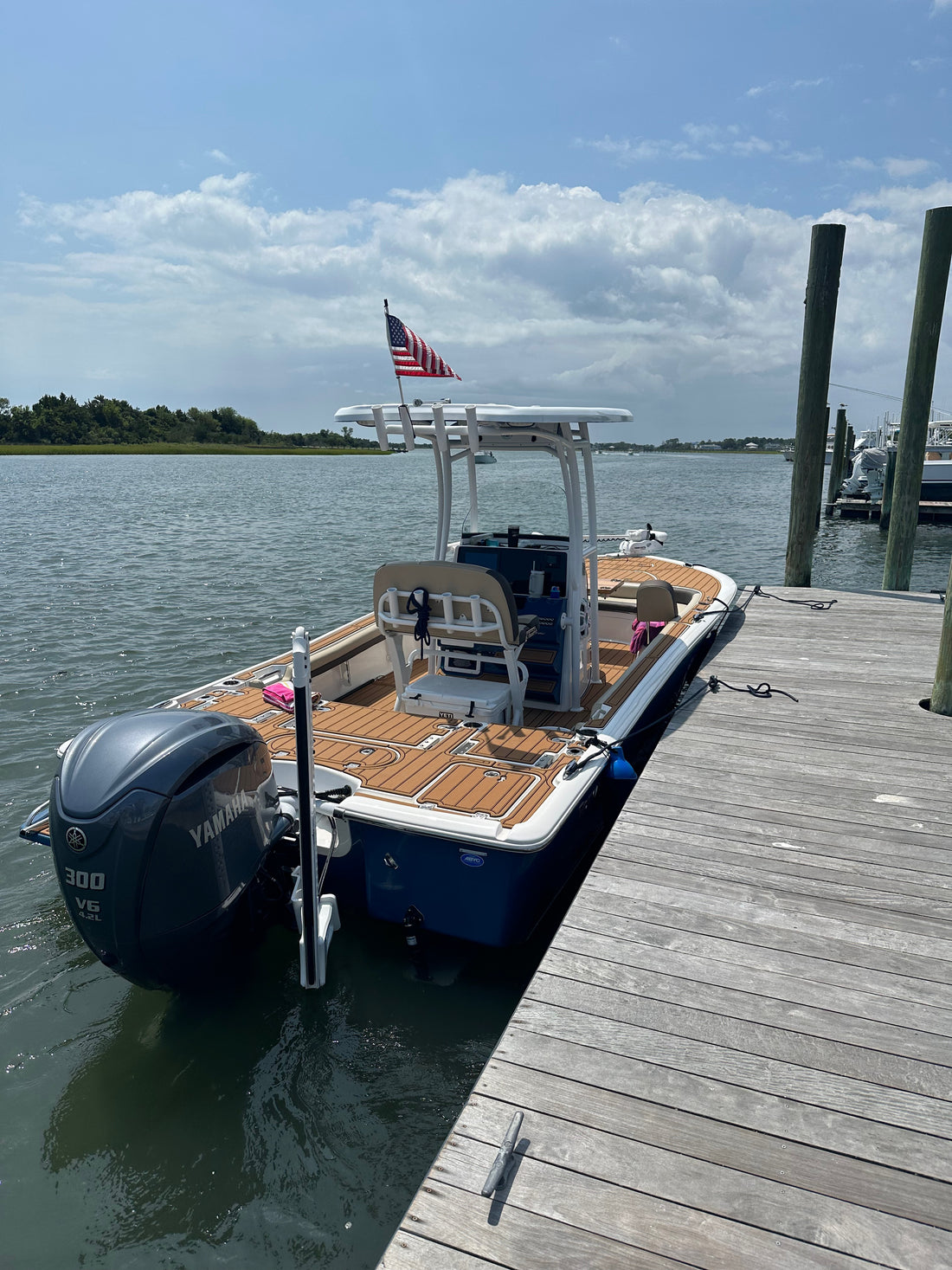Intro
Are you a boat enthusiast who loves spending time out on the water but struggles with docking your single-engine boat? Docking can be a daunting task, especially for those new to boating or for solo boaters. In this step-by-step guide, we will walk you through the process of successfully docking a single-engine boat. From preparing to dock to securing your boat in place, we will cover everything you need to know to make docking a breeze. And if you're looking to enhance your docking experience with the right accessories, we've got you covered with tips on finding the perfect teak boat table for your vessel.
Preparing to Dock: What You Need to Know
Getting your boat ready for docking starts long before you reach the dock. The first step in a seamless docking process is ensuring that all your docking gear, including lines and fenders, are accessible and prepared for use. This prep work is crucial as it prevents any last-minute scrambles that could complicate the docking process. It’s also important to familiarize yourself with the docking area ahead of time. Understanding the layout, potential obstacles, and the direction of wind and current will help you formulate a strategy that takes these elements into account. Additionally, adjust your speed well in advance. Slowing down too late can make it difficult to maneuver your boat with the precision required for docking. Communication plays a key role in preparing to dock, especially if you have passengers on board. Assigning roles and responsibilities ensures that everyone knows what to do and when to do it, which is particularly useful during the critical moments of docking. While the focus here is on the practical aspects of docking preparation, remember, the goal is to create a stress-free and safe docking experience for everyone involved.
Approach Techniques for Single Engine Boats
When navigating toward the dock with a single-engine boat, precision and patience are paramount. Begin your approach at a cautious angle, ideally 45 degrees, allowing for a graceful arc towards your intended docking spot. This technique provides more control and flexibility, especially when managing unforeseen shifts in wind or current. As you edge closer, judicious use of the throttle becomes essential; a gentle touch can help you maintain the momentum needed for adjustments without overshooting your mark.
Steering at this juncture is more about anticipation than reaction. Predict the way your boat will drift under the existing conditions and adjust your course accordingly. If the wind or current is against you, use them to your advantage by letting them help guide your boat into position, reducing the need for excessive throttle adjustments.
Remember, the objective is not just to reach the dock but to do so in a manner that allows for an easy transition to securing your vessel. Positioning your boat so that it naturally aligns with the dock, with minimal need for last-minute corrections, is the goal. Keep in mind, each docking scenario is unique; hence, staying adaptable and ready to modify your approach based on immediate conditions is crucial for a seamless docking process.
Mastering the Use of Throttle and Steering
Gaining proficiency with your boat's throttle and steering is fundamental to docking success. The throttle controls your boat's speed, while the steering dictates its direction - together, they are your primary tools for navigating your approach to the dock. To master these controls, start by practicing in open waters where you have plenty of space to experiment without risk. Work on making small, incremental adjustments to get a feel for how your boat responds. This is particularly important in a single-engine boat, where changes in speed and direction can have pronounced effects on maneuverability.
Familiarize yourself with the nuances of your boat's behavior at various throttle levels and steering angles. For example, notice how your boat drifts when you ease off the throttle or how quickly it responds to steering adjustments at different speeds. This awareness will enable you to anticipate your boat's movements and make more precise adjustments during the docking process.
Additionally, experiment with using your throttle and steering in tandem to perform maneuvers such as pivoting in place or reversing direction. These skills can be invaluable when you find yourself needing to make corrections or adjustments as you approach the dock. Remember, the key to mastering the use of throttle and steering lies in practice and patience. The more you refine your ability to control your boat, the more seamless and successful your docking will become.
Securing Your Boat to the Dock
Once your boat is gently nudged into the perfect docking position, the next critical step involves securing it effectively to prevent any drift or movement away from the dock. Begin by strategically placing your fenders to protect your boat's hull from bumps and scrapes against the dock. Fenders act as a cushion, absorbing impacts and reducing the risk of damage to your boat. Next, grab your lines, which should already be prepared and easily accessible from the preparation stage. Attach your lines to the cleats on your boat, then carefully tie them to the dock's cleats or posts, paying close attention to the tension. The goal is to achieve a balance that allows your boat some movement due to water dynamics but keeps it close enough to the dock to prevent any significant shifting. It’s crucial to use the correct knots – a bowline or a cleat hitch, for example – to ensure that your lines are secure but can be easily released when it's time to depart. Adjusting the lines for the right amount of slack will accommodate changes in water level or pressure against the boat, ensuring that your vessel remains safe and secure at the dock, ready for your next adventure.
Enhancing Your Docking Experience with the Right Accessories
To truly elevate your docking experience, incorporating premium accessories into your boating lifestyle is key. Among these, a high-quality teak boat table stands out as a must-have for any boat enthusiast. Not only does it add a touch of elegance and sophistication to your vessel, but it also serves as a practical addition for hosting gatherings or enjoying meals on the water. When selecting a teak boat table, consider models that offer durability and resistance to the marine environment, ensuring longevity and ease of maintenance. Look for designs that can be customized to fit the unique dimensions of your boat, allowing for optimal use of space without compromising on style or functionality. A well-chosen teak table can transform your boating experience, merging aesthetic appeal with practicality, making every docking an opportunity to create lasting memories on the water.
Tips and Tricks for Solo Docking
Solo docking a single-engine boat requires a blend of patience, skill, and a bit of ingenuity. One critical tip is to utilize pre-set lines and fenders. By having these prepared in advance, you can minimize the need for rapid, stressful adjustments as you approach the dock. It's beneficial to practice the art of docking under various conditions, as this will prepare you for the unpredictable nature of the water. Learn how to leverage the wind and current to your advantage, guiding your boat into position with minimal effort.
Another useful strategy is to establish a step-by-step approach in your mind before initiating the docking process. This mental run-through can help you anticipate your moves and stay one step ahead of the docking sequence. When solo, it’s also advantageous to employ the 'bump-and-secure' technique, gently bumping the dock where you intend to tie up, then quickly securing the boat before it drifts. This method is particularly effective in calm conditions.
Finally, always ensure your personal safety by wearing a life jacket and keeping a handheld VHF radio within reach, in case you need assistance. Solo docking doesn't have to be a daunting challenge. With practice, a calm demeanor, and a strategic approach, you'll find it becomes a fulfilling part of your boating experience.
Avoiding Common Docking Mistakes
Navigating the final moments of docking can sometimes lead to oversight of critical elements, leading to common but avoidable mistakes. A frequent error is misjudging the approach speed, which can cause last-minute complications and reduce the control you have over your boat as you near the dock. Another oversight is neglecting the impact of environmental factors like wind and current, which can dramatically affect the docking process if not taken into consideration early on. Additionally, improper securing of the boat post-docking can lead to potential drifts or damage. Ensuring that your boat is tied securely, with the right amount of tension in the lines, is vital for keeping your vessel safe and stationary. By maintaining a cautious approach, being mindful of natural conditions, and securing your boat thoroughly, you can sidestep these common docking missteps, making for a smoother and more reliable docking experience every time.

